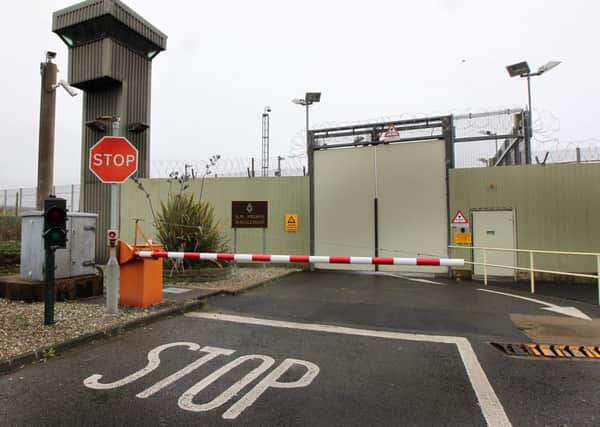No punishment for drug use at Magilligan


The Chief Inspector of Prisons in England and Wales said that a recent inspection of the County Londonderry jail found a “degree of complacency about safety” and high levels of drug use at Magilligan.
The report found that while the prison has significant strengths, its performance has slipped since it was last inspected in 2010 and action is needed to prevent a further decline.
Advertisement
Hide AdAdvertisement
Hide AdThe inspection found that good relationships between staff and prisoners existed and there were reasonable levels of safety at the prison.
Real progress was also found to have been made in terms of resettlement practice which had been assessed as ‘good’ by Inspectors, but the report expressed concern that the strengths identified at Magilligan could be undermined by a risk averse culture, insufficient purposeful activity for prisoners and an unwillingness to challenge poor behaviour.
Speaking after the publication of the report Brendan McGuigan, Chief Inspector of Criminal Justice in Northern Ireland said: “Since our last inspection of Magilligan Prison in March/April 2010, there has been clear progress in some areas. Relationships between staff and prisoners were much better than elsewhere in Northern Ireland and we noted many good interactions between staff and prisoners.
“Despite some gaps in the Resettlement Strategy, prisoners had good access to a broad range of resettlement services which is crucial to ensure seamless transition into the community. The inspection also noted some excellent, joined-up offender management driven by both prison and probation staff.”
Advertisement
Hide AdAdvertisement
Hide AdNick Hardwick, Her Majesty’s Chief Inspector of Prisons in England and Wales said: “The atmosphere throughout the prison was relaxed and calm. Free flow movement was well managed and staff supervision on house blocks was effective.
“Inspectors also found evidence that mental health services had improved within the prison. Interventions to tackle substance misuse were comprehensive and appropriate, although waiting lists were long,” said Mr Hardwick.
However the Chief Inspectors were concerned by some of the inspection findings and called for improvements to be made.
“This inspection found a degree of complacency about safety within the prison and a culture that was risk averse. This sometimes manifested itself in an unwillingness to challenge poor behaviour. For example, levels of drug use were high and there were no disciplinary consequences for a positive drug test result,” said Mr McGuigan.
Advertisement
Hide AdAdvertisement
Hide Ad“The level of purposeful activity was also poor and at the time of the inspection, nearly half of the prison population were not participating in education, vocational training or work activities.”
Mr Hardwick continued: “While there was reasonable time out of cells for prisoners, it was unfortunate so many were not engaged in challenging work or participating in good quality education and training which would enhance their employability skills on release.”
In conclusion, the Chief Inspector of Criminal Justice said: “Rehabilitation is not easy and does not happen overnight. It needs prisoners to be challenged, to confront their offending behaviours, to gain skills that will help them.”